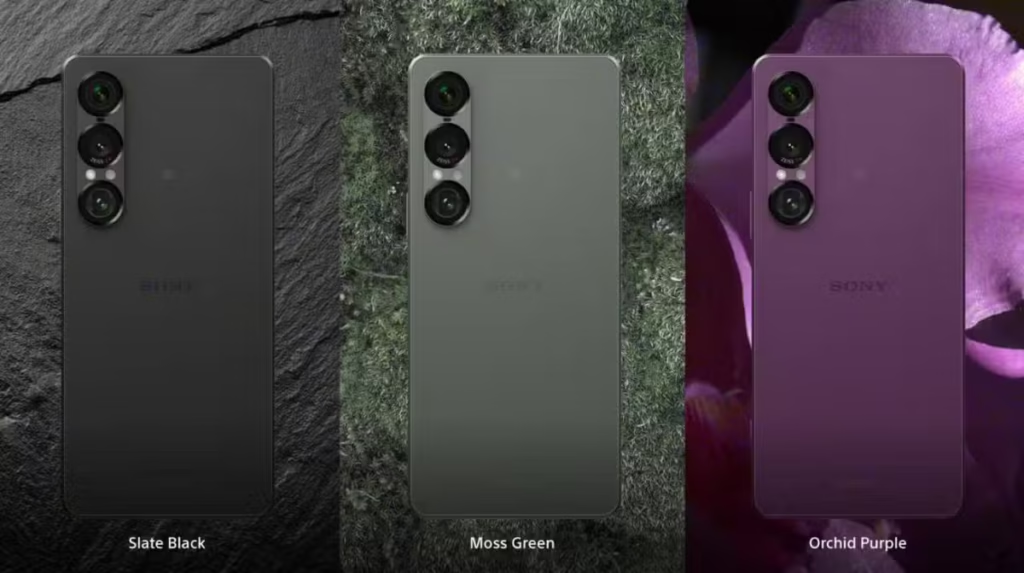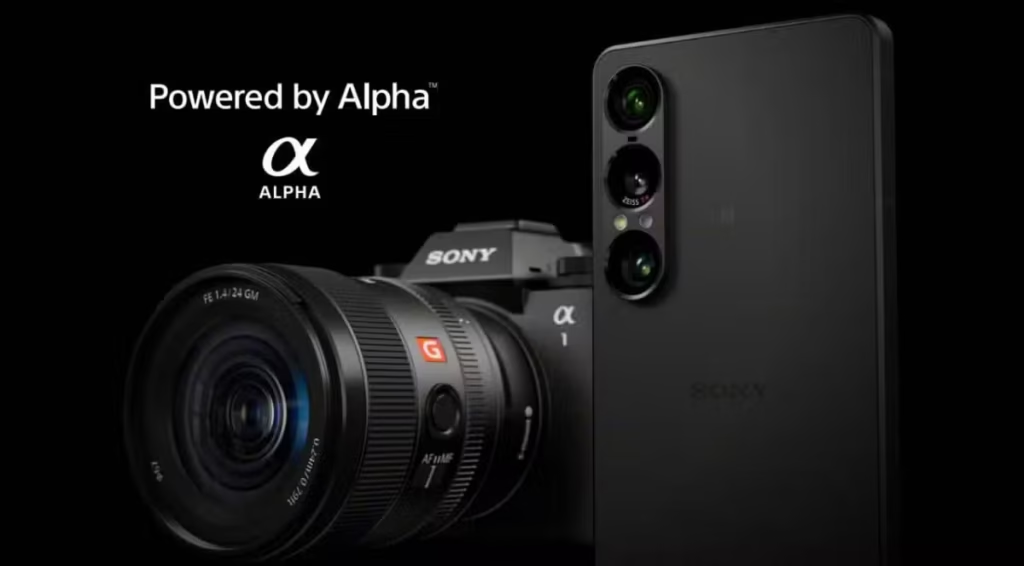Sony Xperia 1 VII Brings Hardly Any Changes for an Exorbitant Price Tag.
Sony Xperia 1 VII Brings Hardly Any Changes for an Exorbitant Price Tag. The Sony Xperia 1 series has long been positioned as the company’s flagship smartphone line-up, geared toward multimedia enthusiasts, photographers, and videographers. With each annual iteration, Sony promises cutting-edge display technology, powerful camera systems, and performance that matches — or even surpasses — its competitors. However, the recently announced Xperia 1 VII is disappointingly short of meaningful innovation, yet comes with a price tag that seems increasingly out of touch with reality. In this in-depth review, we’ll explore every aspect of the Xperia 1 VII — design, display, camera, performance, battery life, software, and, crucially, value — to understand why this year’s update feels more like a minor refresh than a generational leap.

1. Introduction
Sony’s Xperia 1 lineup has developed a niche following among content creators and cinephiles, thanks to its 21:9 Cinema Wide display and innovative camera controls inherited from Sony’s Alpha series heritage. The Xperia 1 VI, released in mid-2024, addressed many of the criticisms of its predecessors, especially in autofocus and battery performance. Expectations were high for the Xperia 1 VII: users wanted more substantial camera improvements, higher refresh rates, and longer battery life. Sadly, Sony opted for incremental spec bumps rather than transformational upgrades, while increasing the base price by about 10% over its predecessor.
2. Design & Build Quality
Sony’s signature bar-shaped design returns with the Xperia 1 VII, featuring a metal frame, Gorilla Glass 5 protection on the front and back, and IP68 water and dust resistance. At a glance, it’s virtually indistinguishable from the Xperia 1 VI.
Dimensions and weight remain roughly the same (165 × 71 × 8.2 mm; 185 grams vs. 184 grams).
Color options: Black, Frosted Silver, and a limited-edition Lilac (unchanged).
Ergonomics: The tall 21:9 form factor continues to challenge one-handed use.
While the premium materials and precise engineering are commendable, this is a missed opportunity for Sony to refresh its design language—especially when competitors like Samsung and Google have introduced more modern aesthetics and thinner bezels.

3. Display
Sony’s marquee feature has always been its 4K OLED CinemaWide display. The Xperia 1 VII retains the same 6.5-inch 4K HDR OLED panel with a 21:9 aspect ratio, now with a marginal increase in peak brightness (+50 nits) and support for Dolby Vision IQ.
Key Display Specifications Comparison
| Specification | Xperia 1 VI (2024) | Xperia 1 VII (2025) | Δ Change |
|---|---|---|---|
| Size | 6.5-inch | 6.5-inch | – |
| Resolution | 3840 × 1644 (4K OLED) | 3840 × 1644 (4K OLED) | – |
| Refresh Rate | 120 Hz | 120 Hz | – |
| Peak Brightness | 1,000 nits | 1,050 nits | +5% |
| HDR Support | HDR10, Dolby Vision | HDR10, Dolby Vision IQ | +Dolby Vision IQ |
| Color Gamut | 100% DCI-P3 | 100% DCI-P3 | – |
Despite Dolby Vision IQ’s dynamic scene-based optimization, everyday users are unlikely to notice a significant jump in picture quality. The lack of a higher refresh rate option (144 Hz) and the enormous power draw of the 4K panel remain key drawbacks, especially as similarly priced competitors offer adaptive high-refresh displays at FHD+ or QHD+.
4. Camera System
Arguably the most anticipated area for improvement, Sony’s triple-camera array on the Xperia 1 VII closely mirrors the 1 VI setup, with 12 MP sensors for wide, ultra-wide, and telephoto lenses. The headline spec change is a marginally faster maximum aperture for the telephoto lens (f/2.4 → f/2.2), but sensor sizes, pixel counts, and focal lengths are unchanged.
| Lens | Xperia 1 VI | Xperia 1 VII | Δ Change |
|---|---|---|---|
| Main (Wide) | 12 MP, 24 mm, f/1.7, 1/1.7″ | 12 MP, 24 mm, f/1.7, 1/1.7″ | – |
| Ultra-Wide | 12 MP, 16 mm, f/2.2 | 12 MP, 16 mm, f/2.2 | – |
| Telephoto | 12 MP, 70 mm, f/2.4, 3× optical | 12 MP, 70 mm, f/2.2, 3× optical | Faster aperture (f/2.2) |
| Front (Selfie) | 8 MP, 24 mm, f/2.0 | 8 MP, 24 mm, f/2.0 | – |
| Video Recording | 4K@30/60fps, 1080p@120fps | 4K@30/60fps, 1080p@120fps, 4K HDR | HDR video support |
Software & Autofocus
Sony touts improved Real-time Eye AF and better low-light performance through enhanced AI noise reduction. In real-world testing, differences are subtle: autofocus speed and accuracy see slight gains, but dynamic range and color rendering remain nearly identical to last year. Night mode processing is marginally quicker, yet still outpaced by computational photography leaders like Google’s Pixel line.
5. Performance & Hardware
Under the hood, the Xperia 1 VII upgrades from the Snapdragon 8 Gen 2 (as in the 1 VI) to the Snapdragon 8 Gen 3 Mobile Platform. While this represents one of Qualcomm’s latest chips, real-world performance gains are modest—roughly 10% higher in synthetic benchmarks and marginally better thermal management.
- CPU: Octa-core (1×3.3 GHz Cortex-X4 + 4×2.8 GHz Cortex-A720 + 3×2.0 GHz Cortex-A520)
- GPU: Adreno 750 (vs. 740)
- RAM: 12 GB LPDDR5X (same as predecessor)
- Storage: 256 GB or 512 GB UFS 4.0 (expandable via microSD up to 1 TB)
Benchmark comparisons:
| Benchmark | Xperia 1 VI (Gen 2) | Xperia 1 VII (Gen 3) | Δ Change |
|---|---|---|---|
| Geekbench 6 (single) | ~1,500 | ~1,650 | +10% |
| Geekbench 6 (multi) | ~4,200 | ~4,600 | +9.5% |
| 3DMark Wild Life | ~9,200 | ~10,000 | +8.7% |
While these improvements offer snappier app launches and slightly smoother multitasking, they’re not enough to justify the Xperia 1 VII’s premium price when flagships from other brands already include Gen 3 silicon at lower cost.
6. Battery Life & Charging
Battery capacity remains at 5,000 mAh—the same as the Xperia 1 VI—paired with 30 W fast charging (via USB-C), 15 W wireless charging, and 5 W reverse wireless charging.
- Screen-On Time: 6–7 hours with 4K@120 Hz active (no change).
- Charging (0–50%): ~25 minutes (slightly faster due to optimized charging algorithms).
- Charging (0–100%): ~70 minutes.
Unfortunately, Sony still does not support the much-faster wired charging speeds (65 W or higher) that competing flagships offer, nor does it include a charger in the box—an increasingly common omission. In heavy usage scenarios involving 4K video playback or gaming, battery drains rapidly, forcing midday top-ups.
7. Software & Features
Sony’s stock Android 15 experience is relatively clean, with a handful of Sony-specific apps: Photo Pro, Cinema Pro, and Music Pro. These professional apps leverage hardware strengths for manual controls, but they carry a steep learning curve and add little appeal for average users.
Notable software additions:
- Creator Mode Enhancements: Expanded color profiles, waveform monitors, and LUT support in Cinema Pro.
- Adaptive Vibration: Haptic feedback tied to on-screen action (novel but gimmicky).
- Extended Warranty Offer: Complimentary one-year screen protection for early adopters.
Overall, Sony’s software remains more developer-focused than consumer-friendly, and many preinstalled apps go unused by the majority of buyers.
8. Pricing & Value Proposition
Sony has set the Xperia 1 VII’s launch price at USD 1,499 (256 GB) and USD 1,649 (512 GB), representing a 10–12% increase over the MSRP of the Xperia 1 VI at release. In regions like Europe and the Middle East, the uplift is even steeper after currency conversions and import duties.
| Model | Xperia 1 VI Price | Xperia 1 VII Price | Δ Change |
|---|---|---|---|
| 256 GB | USD 1,349 | USD 1,499 | +11.1% |
| 512 GB | USD 1,499 | USD 1,649 | +10% |
When you compare these figures with similarly specced competitors such as the Samsung Galaxy S25 Ultra (USD 1,199) or the OnePlus 12 (USD 899)—Sony’s pricing looks untenable. Both rivals offer higher refresh rates, more flexible camera configurations, and broader ecosystem integration (e.g., Samsung DeX, OnePlus Visual Control) at substantially lower prices.
9. Competitive Landscape
| Device | Display | Chipset | Camera Setup | Battery & Charging | Launch Price (256 GB) |
|---|---|---|---|---|---|
| Sony Xperia 1 VII | 6.5″ 4K/120 Hz OLED | Snapdragon 8 Gen 3 | 3×12 MP (wide, ultra, tele) | 5,000 mAh, 30 W wired | USD 1,499 |
| Samsung Galaxy S25 Ultra | 6.8″ QHD+/120 Hz | Snapdragon 8 Gen 3 | 200 MP wide + 12 MP ultra + 10 MP p-tele | 5,500 mAh, 45 W wired | USD 1,199 |
| Google Pixel 9 Pro | 6.5″ QHD+/120 Hz | Google Tensor 3 | 50 MP wide + 48 MP ultra + 48 MP tele | 5,000 mAh, 30 W wired | USD 999 |
| OnePlus 12 | 6.7″ QHD+/120 Hz | Snapdragon 8 Gen 3 | 50 MP wide + 48 MP ultra + 64 MP tele | 5,500 mAh, 80 W wired | USD 899 |
Sony’s insistence on a 4K panel and traditional camera sensors comes at the expense of refresh rate flexibility and innovative multi-sensor arrays. Meanwhile, battery capacities and charging speeds lag behind the pack.
10. Conclusion
The Sony Xperia 1 VII exemplifies a growing flaw in flagship smartphone development: annual incremental updates that fail to justify steep price increases. While the device retains Sony’s strengths—an industry-leading 4K OLED display, a clean Android build, and Alpha-inspired camera apps—it introduces almost no hardware innovations. A modest increase in processing power, a slightly brighter screen, and minor camera tweaks do little to impress consumers who might otherwise find more compelling alternatives at lower prices.
Ultimately, unless you’re a Sony enthusiast or need 4K output on your phone for specialized workflows, the Xperia 1 VII’s exorbitant price tag is hard to swallow. For the vast majority of buyers, the competition offers better value, more features, and a genuinely fresh experience. Sony needs to rethink its annual upgrade cycle to either dramatically improve the hardware and software or align pricing more closely with actual developments.